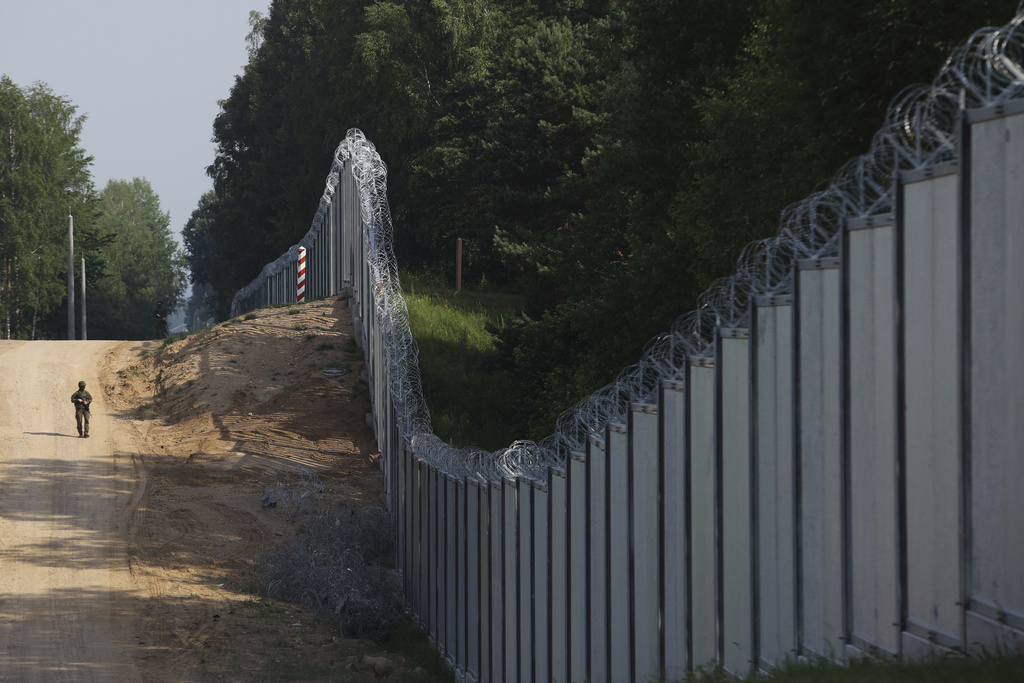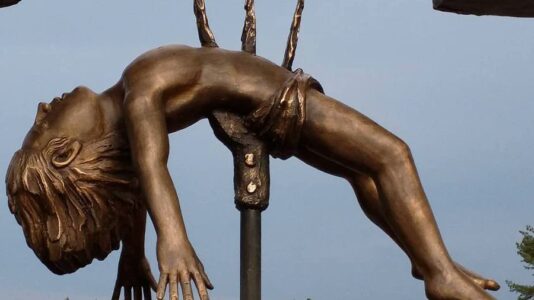Two-meter spears dipped in feces to cause infection, destruction of barriers with levers, slingshots, and thrown jars. Polish soldiers, Border Guard officers, police, and residents of the border area continue to face the dangerous practice of the illegal crossing of the Polish-Belarusian border by migrants from the Middle East and Africa.
The crisis at the border dates back to the second half of 2021 with around 3,500 illegal crossing attempts recorded in August, doubling in September, and soaring to 17,500 by October. It became evident that a coordinated assault on the Polish border was underway, orchestrated by Minsk and Moscow.
The operation, dubbed “Lock” by the Belarusian KGB, involves pulling migrants from the Middle East and Africa under false promises of easy entry into the European Union, only to compel them to forcibly breach the border, turning them into pawns of a hybrid operation that preceded Russia’s invasion of Ukraine.
Initially, there was no physical barrier, and service members secured the border area by deploying razor wire. Throughout 2021 and 2022, soldiers faced harsh conditions including winter weather and mud which complicated their patrols, both on foot and by vehicle.
The border has since been fortified with a barrier, yet the crisis persists. This year began with tragic news from the border: 40 soldiers have been injured so far during 2024, and Sergeant Mateusz Sitek died, succumbing to injuries caused by a makeshift spear.
In light of these ongoing challenges, Defence24.pl visited the border to report firsthand on the situation. Near a cemetery where Polish soldiers from 1920 are buried, and the majestic Bug River cuts through the border, local sentiments range from grief over the young soldier’s death to frustration at the continued defense of migrant actions.
Near one of the refugee centers located in Podlasie, I spoke with African migrants I encountered. Although my interlocutor is reticent, he admits to having crossed the border barrier. “I am from Sudan. I have been in Poland for 10 days,” he responds. He declines to go into detail about what happened on the Belarusian side. When asked if it was difficult, he confirmed it was.
Before illegally forcing across the border, migrants often quarrel among themselves. “There is conflict among them. Separate ethnic groups stick to their own, fighting among themselves – Africans, Afghans, Iraqis. They keep to themselves,” a resident of Podlasie shares in the conversation. In the border towns, one can encounter groups of immigrants. Among the residents, women in hijabs and whole groups of Africans stand out. “They are constantly crossing the border. They are in the forests. I have reported this myself,” one resident of Hajnówka tells me.
“They are trained by Belarusian and Russian services. They construct two-meter spears, which they urinate on or dip in feces to cause infections in those they wound. They use slingshots and throw jars filled with various substances. They use crowbars. They make throat-slitting gestures to Polish soldiers to signal that they will kill them,” one of the residents of Podlasie tells me.
Meanwhile, the introduction of a buffer zone has reportedly cut illegal border crossings by over half, according to Border Guard statistics.
As Poland continues to bolster border security, the recent deaths and detentions highlight the urgency of enhancing safety for those serving at the border. Training programs are being rolled out nationwide for border guards and soldiers to better prepare them for the challenges they face on the front lines.






